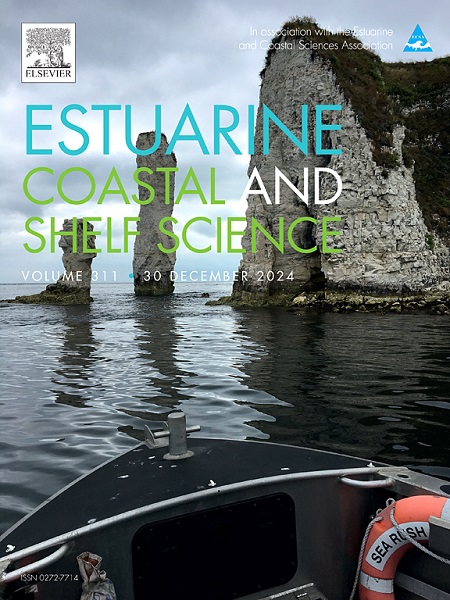Development and characterization of novel microsatellite markers in the Manila clam parasitic arthropods, Nymphonella tapetis (Pycnogonida, Ascorhynchidae), using next-generation sequencing
IF 2.6
3区 地球科学
Q1 MARINE & FRESHWATER BIOLOGY
引用次数: 0
Abstract
Nymphonella tapetis is a marine parasite that infects bivalves, including the Manila clam, and has caused significant fishery damage in Japan from 2007 to 2009. To detect the genetic diversity and analyze the population structures of this species, this study aimed to isolate microsatellite markers for N. tapetis using next-generation sequencing. A total of 1095 microsatellite regions were identified, and 36 primer sets were successfully amplified by PCR. Among these, 13 reproducible polymorphic loci were selected for the genetic analysis of N. tapetis individuals from Japan. The primers were specific to N. tapetis and showed high polymorphism, so they were used for population genetics studies. No significant deviation from Hardy-Weinberg equilibrium was observed at all these loci, indicating random mating in the population. No significant difference was observed in allele frequency at these loci was observed among three regional samples (Futtsu and Banzu in Chiba Prefecture, and Mikawa Bay in Aichi Prefecture). These showed that Futtsu, Banzu, and Mikawa Bay populations are genetically similar with one another, suggesting that they originated from the same ancestral population. However, allelic richness in the Futtsu tidal flat population was higher, possibly indicating that it as the source for the other populations.

马尼拉蛤寄生节肢动物绦虫(Pycnogonida, Ascorhynchidae)微卫星标记的新一代测序研究
绦虫是一种感染双壳类动物的海洋寄生虫,包括马尼拉蛤,从2007年到2009年在日本造成了重大的渔业损害。为了检测该物种的遗传多样性并分析其种群结构,本研究利用新一代测序技术分离了绦虫微卫星标记。共鉴定出1095个微卫星区,通过PCR扩增出36个引物。选取13个可重复多态性位点,对日本绒毡绦虫个体进行遗传分析。引物对绦虫特异性强,多态性高,可用于群体遗传学研究。在所有这些位点上均未观察到明显偏离Hardy-Weinberg平衡,表明种群中存在随机交配。这些位点的等位基因频率在3个区域样本(千叶县的富津和板津,爱知县的三川湾)间无显著差异。这表明Futtsu, Banzu和Mikawa Bay种群在基因上彼此相似,这表明它们起源于同一个祖先种群。富津潮滩种群等位基因丰富度较高,可能是其他种群等位基因的来源。
本文章由计算机程序翻译,如有差异,请以英文原文为准。
求助全文
约1分钟内获得全文
求助全文
来源期刊
CiteScore
5.60
自引率
7.10%
发文量
374
审稿时长
9 months
期刊介绍:
Estuarine, Coastal and Shelf Science is an international multidisciplinary journal devoted to the analysis of saline water phenomena ranging from the outer edge of the continental shelf to the upper limits of the tidal zone. The journal provides a unique forum, unifying the multidisciplinary approaches to the study of the oceanography of estuaries, coastal zones, and continental shelf seas. It features original research papers, review papers and short communications treating such disciplines as zoology, botany, geology, sedimentology, physical oceanography.

 求助内容:
求助内容: 应助结果提醒方式:
应助结果提醒方式:


